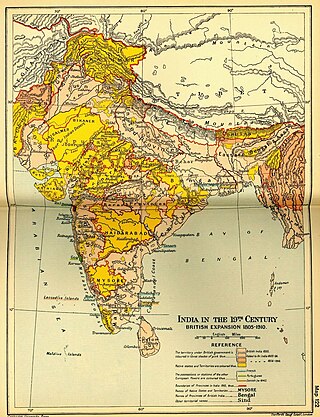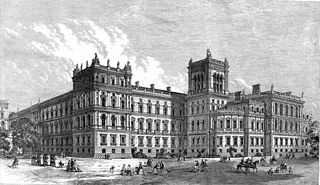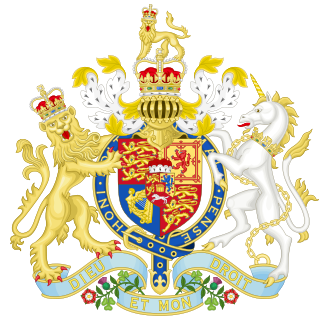
The United East India Company, commonly known as the Dutch East India Company, was a chartered trading company and the first joint-stock company in the world. Established on 20 March 1602 by the States General of the Netherlands amalgamating existing companies, it was granted a 21-year monopoly to carry out trade activities in Asia. Shares in the company could be purchased by any citizen of the United Provinces and then subsequently bought and sold in open-air secondary markets. The company possessed quasi-governmental powers, including the ability to wage war, imprison and execute convicts, negotiate treaties, strike its own coins, and establish colonies. Also, because it traded across multiple colonies and countries from both the East and the West, the VOC is sometimes considered to have been the world's first multinational corporation.

The East India Company (EIC) was an English, and later British, joint-stock company founded in 1600 and dissolved in 1874. It was formed to trade in the Indian Ocean region, initially with the East Indies, and later with East Asia. The company gained control of large parts of the Indian subcontinent and colonised parts of Southeast Asia and Hong Kong. At its peak, the company was the largest corporation in the world by various measures and had its own armed forces in the form of the company's three presidency armies, totalling about 260,000 soldiers, twice the size of the British army at the time.

Warren Hastings was a British colonial administrator, who served as the first Governor of the Presidency of Fort William (Bengal), the head of the Supreme Council of Bengal, and so the first Governor-General of Bengal in 1772–1785. He and Robert Clive are credited with laying the foundation of the British Empire in India. He was an energetic organizer and reformer. In 1779–1784 he led forces of the East India Company against a coalition of native states and the French. In the end, the well-organized British side held its own, while France lost influence in India. In 1787, he was accused of corruption and impeached, but he was eventually acquitted in 1795 after a long trial. He was made a Privy Councillor in 1814.

The Governor-General of India was the representative of the monarch of the United Kingdom in their capacity as the Emperor/Empress of India and after Indian independence in 1947, the representative of the Monarch of India. The office was created in 1773, with the title of Governor-General of the Presidency of Fort William. The officer had direct control only over his presidency but supervised other East India Company officials in India. Complete authority over all of British territory in the Indian subcontinent was granted in 1833, and the official came to be known as the "Governor-General of India".

Company rule in India was the rule of the British East India Company on the Indian subcontinent. This is variously taken to have commenced in 1757, after the Battle of Plassey, when the Nawab of Bengal Siraj ud-Daulah was defeated and replaced with Mir Jafar, who had the support of the East India Company; or in 1765, when the Company was granted the diwani, or the right to collect revenue, in Bengal and Bihar; or in 1773, when the Company abolished local rule (Nizamat) in Bengal and established a capital in Calcutta, appointed its first Governor-General, Warren Hastings, and became directly involved in governance. The Company ruled until 1858, when, after the Indian Rebellion of 1857 and the Government of India Act 1858, the India Office of the British government assumed the task of directly administering India in the new British Raj.

The Bengal Presidency, officially the Presidency of Fort William in Bengal and later Bengal Province, was a province of British India and the largest of all the three Presidencies. At the height of its territorial jurisdiction, it covered large parts of what is now South Asia and Southeast Asia. Bengal proper covered the ethno-linguistic region of Bengal. Calcutta, the city which grew around Fort William, was the capital of the Bengal Presidency. For many years, the Governor of Bengal was concurrently the Governor-General of India and Calcutta was the capital of India until 1911.

The India Office was a British government department established in London in 1858 to oversee the administration, through a Viceroy and other officials, of the Provinces of India. These territories comprised most of the modern-day nations of Indian Subcontinent as well as Yemen and other territories around the Indian Ocean. The department was headed by the Secretary of State for India, a member of the British cabinet, who was formally advised by the Council of India.

The East India Company Act, also known as Pitt's India Act, was an Act of the Parliament of Great Britain intended to address the shortcomings of the Regulating Act of 1773 by bringing the East India Company's rule in India under the control of the British Government. Named for British prime minister William Pitt the Younger, the act provided for the appointment of a Board of Control, and provided for a joint government of British India by the Company and the Crown with the government holding the ultimate authority. A six member board of control was set up for political activities and Court of directors for financial/commercial activities. As the Regulating Act had many defects, it was necessary to pass another Act to remove these defects.
Sir William Hedges was an English merchant and the first governor (1681–1683) of the East India Company (EIC) in Bengal. In later life, his positions included joint sheriff of London for 1694.

The British credit crisis of 1772–1773 also known as the crisis of 1772, or the panic of 1772, was a peacetime financial crisis which originated in London and then spread to Scotland and the Dutch Republic. It has been described as the first modern banking crisis faced by the Bank of England. New colonies, as Adam Smith observed, had an insatiable demand for capital. Accompanying the more tangible evidence of wealth creation was a rapid expansion of credit and banking, leading to a rash of speculation and dubious financial innovation. In today's language, they bought shares on margin.

The East India Company Act 1793, also known as the Charter Act 1793, was an Act of the Parliament of Great Britain which renewed the charter issued to the British East India Company (EIC).The veto which was originally given to LORD CORNWALL IS was continued for all the governer generals. Bombay and Madras presidency were kept in supretending of FORT WILLIAM . It was mentioned to check infanticide.

The East India Company Act 1813, also known as the Charter Act 1813, was an Act of the Parliament of the United Kingdom that renewed the charter issued to the British East India Company, and continued the Company's rule in India. However, the Company's commercial monopoly was ended, except for the tea and opium trade and the trade with China, this reflecting the growth of British power in India.

Almorah was built at Selby, England in 1817. She made one voyage for the British East India Company (EIC), and three transporting convicts to Australia. She foundered in 1832 in the North Atlantic.
The Supreme Council of Bengal was the highest level of executive government in British India from 1774 to 1833: the period in which the East India Company, a private company, exercised political control of British colonies in India. It was formally subordinate to both the East India Company's Court of Directors and to the British Crown.

Houghton was launched in 1782 and made six voyages as an East Indiaman for the British East India Company (EIC). In 1794 she was part of an EIC squadron that had some success against French privateers and naval vessels in the Sunda Strait, and then in 1796 she participated as a transport in the British capture of St Lucia. She was sold in 1799 and her owner took her out to India to work in the tea trade between India and China. She foundered in 1803.

Nonsuch was launched at Calcutta in 1781 as the first large vessel built there. She was designed to serve as either a merchantman or a man-of-war. She spent the first 12 years of her career as a merchant vessel, carrying opium to China amongst other cargoes. After the outbreak of the French Revolutionary Wars in 1793 her owner frequently hired her out as an armed ship to the British East India Company (EIC). She participated in an engagement with a French naval squadron and recaptured an East Indiaman. She also made two voyages for the EIC. After the Peace of Amiens in 1802 the EIC paid her off; as she was being hauled into a dockyard for repairs she was damaged and the decision was taken to break her up.
Varuna was launched at Calcutta in 1796. She made four voyages as an "extra ship" for the British East India Company (EIC), and then spent two years as a troopship. She returned to India in 1806. She was lost in 1811, probably in a typhoon.
Lord Forbes was launched at Chester in 1803 as a West Indiaman. She soon became an "armed defense ship", but by 1805 had returned to being a West Indiaman. She made two voyages as an "extra" ship for the British East India Company (EIC). She continued trading with India until 1817 when she sustained damage on her way to Bengal. There she was surveyed, condemned and sold.













